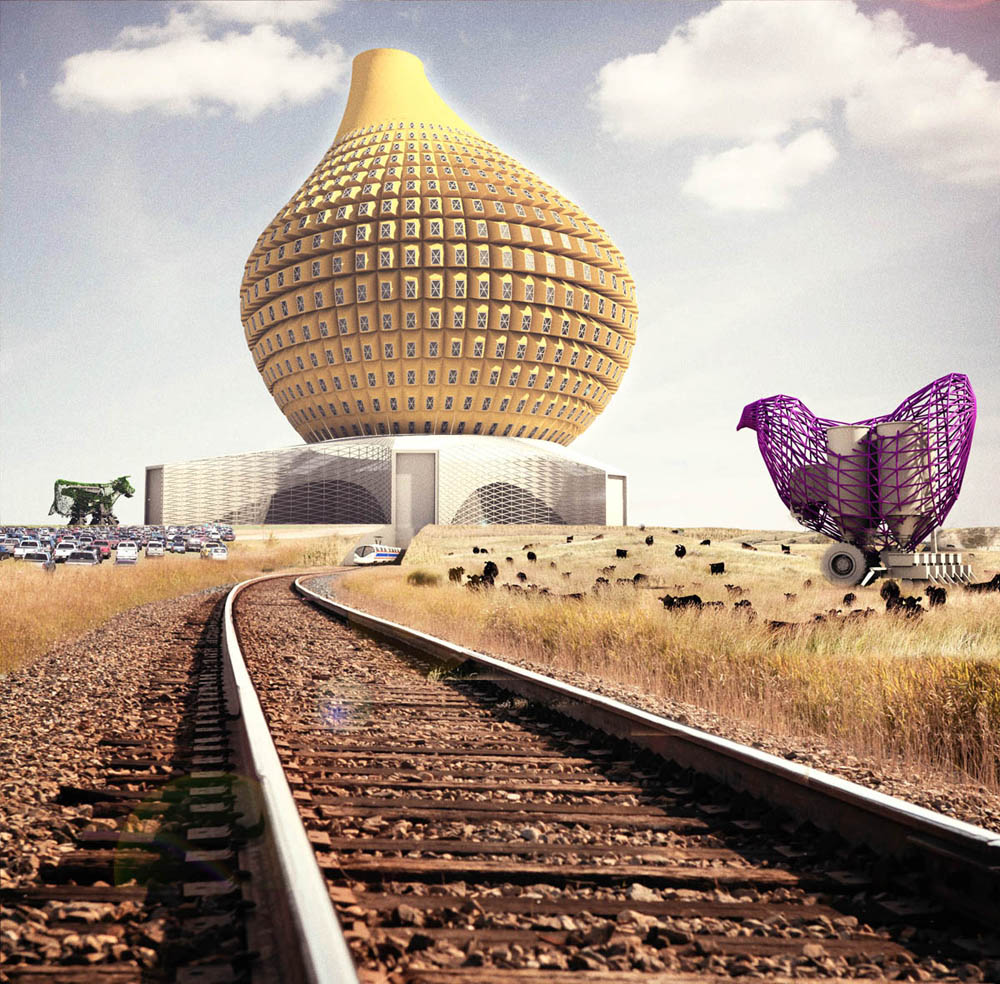 [Image: “Farmland World” by Design With Company (Allison Newmeyer and Stewart Hicks)].
[Image: “Farmland World” by Design With Company (Allison Newmeyer and Stewart Hicks)].
One of the runners-up for the recent Animal Architecture Awards is also one of my favorites from the competition: “Farmland World” by Allison Newmeyer and Stewart Hicks of the Chicago-based Design With Company.
The project is an ironic investigation of how humans relate to farm animals—more specifically, how the ongoing spatial separation between humans and the animals they rely on for food and other forms of agricultural work can make animals seem to be nothing more than utilitarian machines.
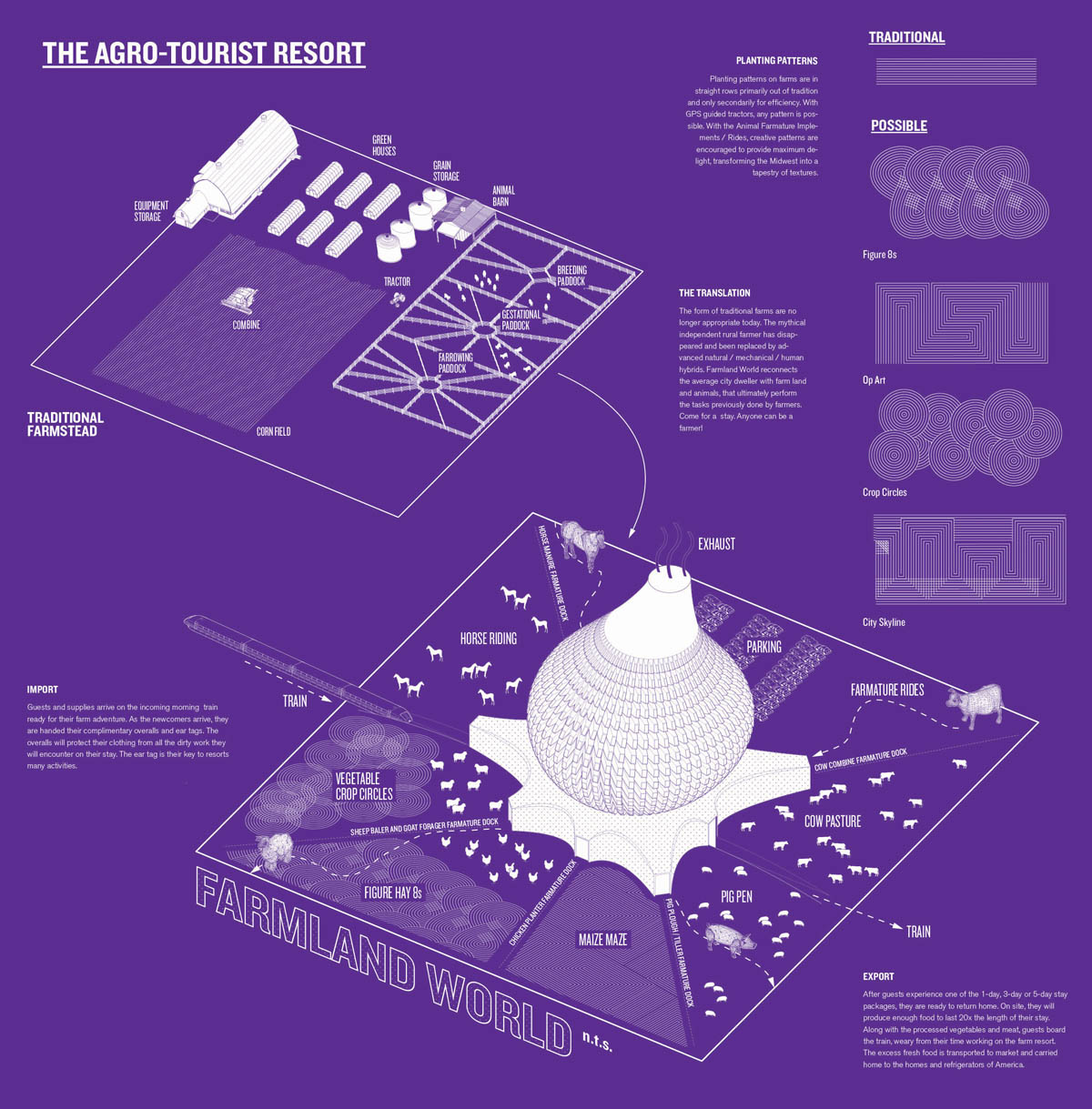 [Image: From “Farmland World” by Design With Company; view larger].
[Image: From “Farmland World” by Design With Company; view larger].
In the architects’ words:
The everyday life of the average American is almost completely disconnected from the land and animals that support them. Even farmers perform their duties primarily through automated mechanisms that remove them from the subject of their industry. The constructed distance between the human “us” and the animal “others” is increasing to the point that distinctions between machines and animals look blurry purely from distanced detachment. From our removed perspective, the extreme demand for cheap food production and the diversion of the pet economy distorts animals until they look more like utilitarian machines (bacon) or anthropomorphic projections to entertain and decorate (tea-cup terrier). As we relate to animals and machines similarly, where each begins to exhibit characteristics of the other, their converging trajectories point to an impending crisis at their collision.
Farmland World makes the human-animal encounter spectacular, proposing an absurdly over-the-top farm animal theme park—a “human/machine/animal hybrid adventure-land.”
 [Image: From “Farmland World” by Design With Company].
[Image: From “Farmland World” by Design With Company].
Farmland World “is a chain of agro-tourist resorts sprinkled across the American Midwestern countryside”:
Part theme park and part working farm, guests arrive to the resort via train and stay as part of 1-day, 3-day or 5-day experience packages. Capitalizing on both recent governmental investments in high-speed rail infrastructure and the plentiful subsidies for farming, the network of resorts combine crowd-sourced farm labor with eco-tainment.
“As train-loads of itinerant fantasy farmers arrive,” Newmeyer and Hicks drily write, “they are herded to the Grazing Coliseum to receive their complimentary overalls. From there, the adventure begins.”
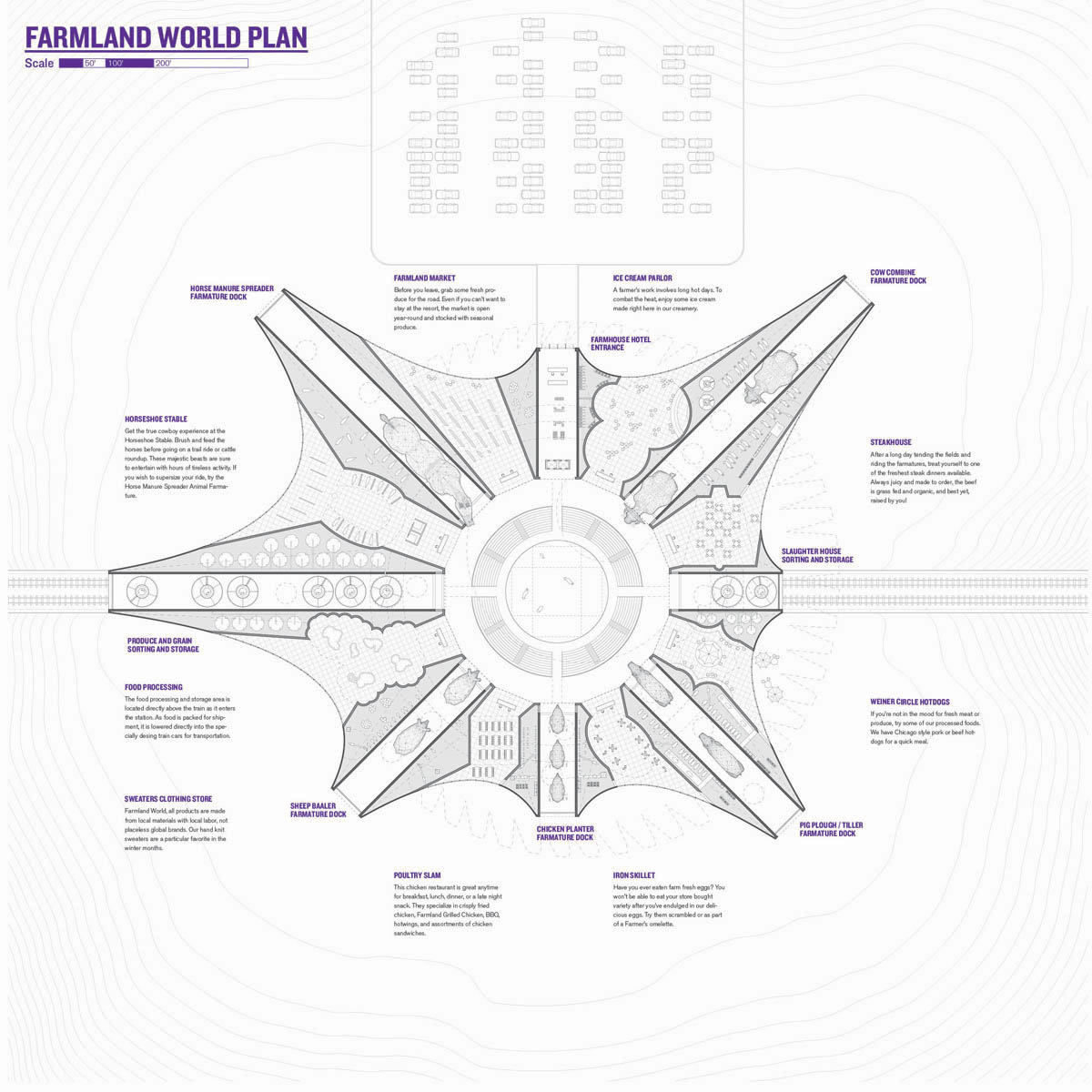 [Image: From “Farmland World” by Design With Company; view larger].
[Image: From “Farmland World” by Design With Company; view larger].
Foregrounding the idea that humans have increasingly come to confuse animals with machines, Farmland World is populated by robots, rides, and representations.
Inflatable mega-pigs and hollow, roving “cow combines” act as “robotic performers,” in the designers’ words. Animal replicants, these false creatures “extend the tradition of machines using and mimicking animals for moving, operating, branding and processing food crops.”
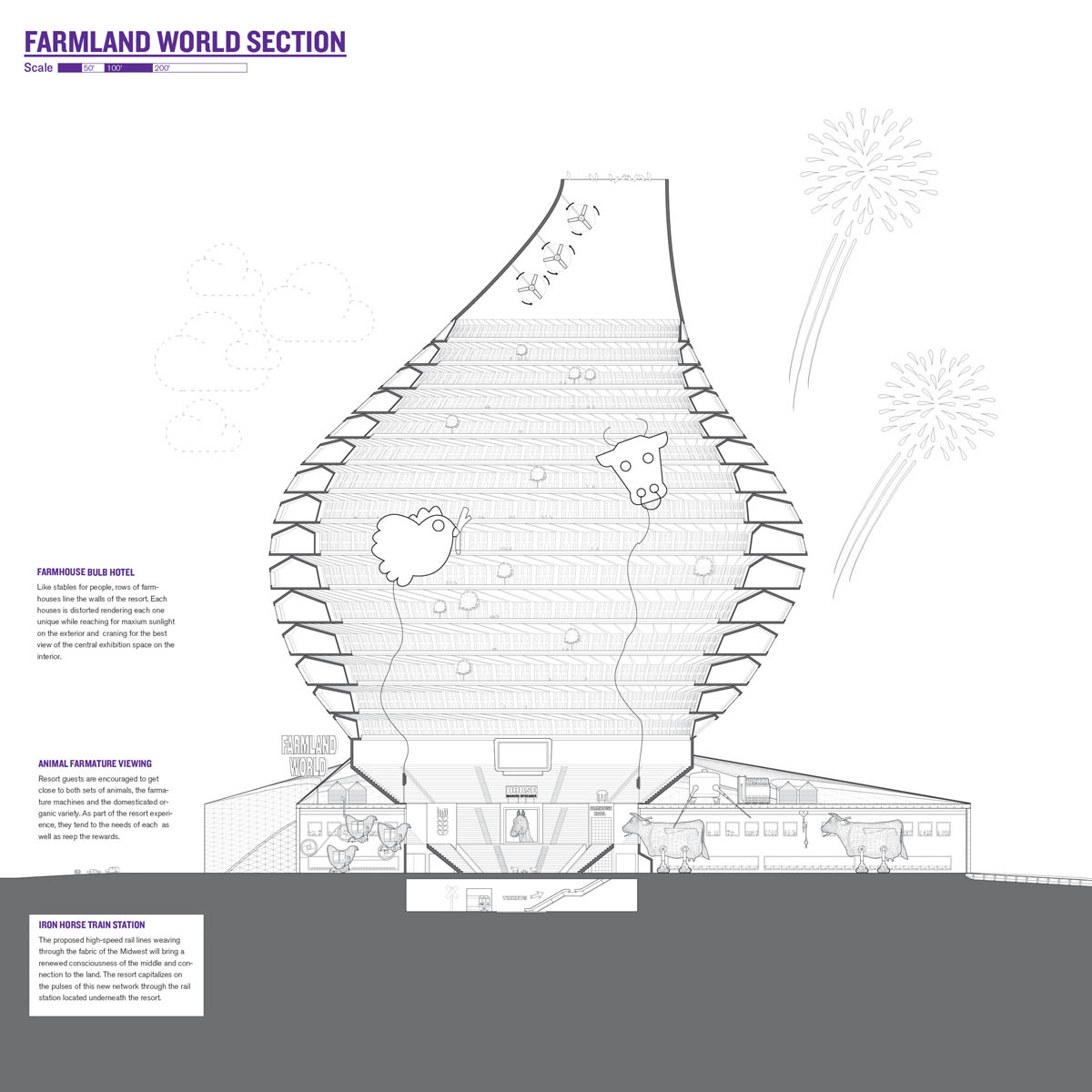
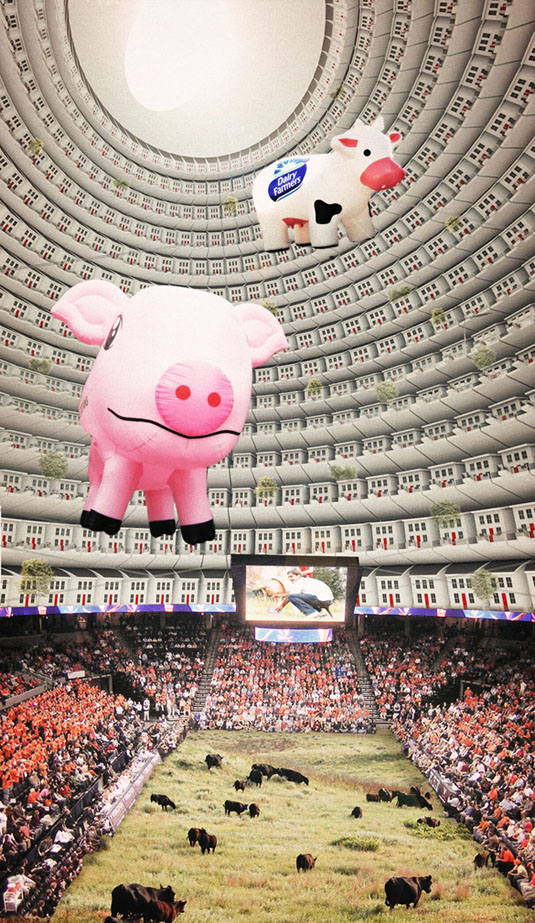 [Image: From “Farmland World” by Design With Company; view section in more detail].
[Image: From “Farmland World” by Design With Company; view section in more detail].
Meanwhile, the architect adds, “temporary farm excursionists”—paying visitors—”work, sowing and harvesting fields, becoming part of the herd. Farmland World embraces this hybrid human-animal-machine relationship, reinvigorating the rural landscape.”
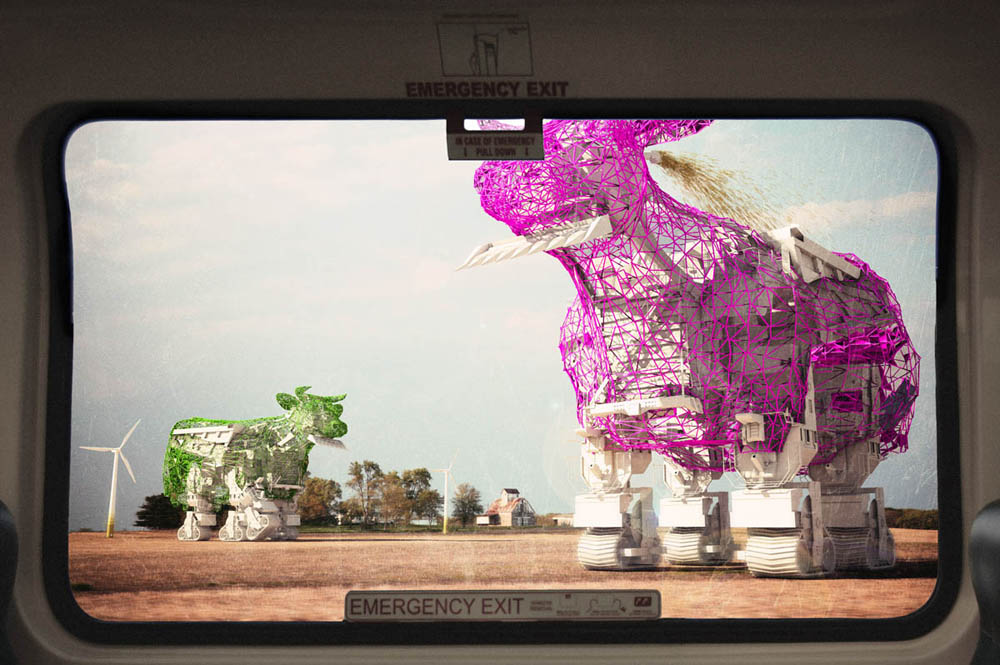
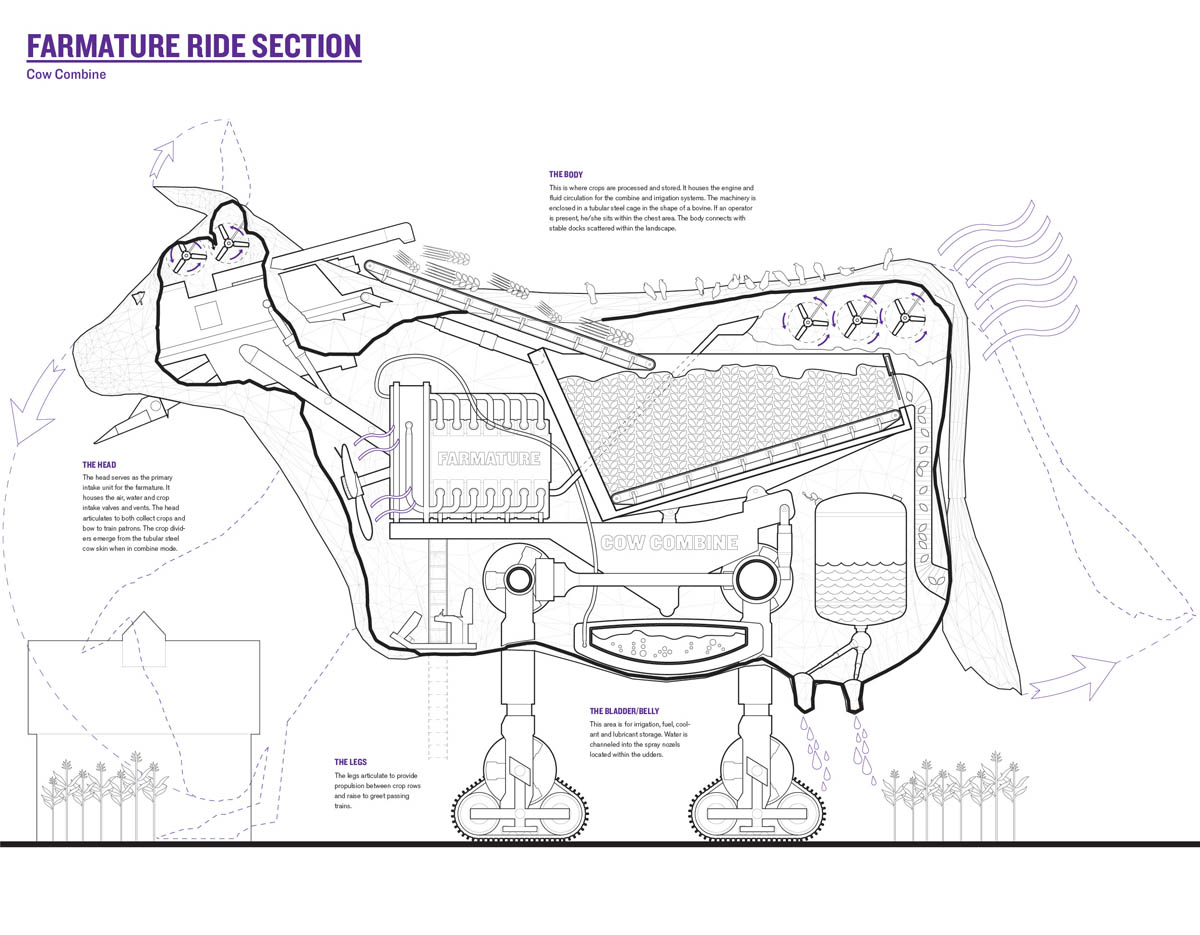 [Images: The robotic super-cows of “Farmland World” by Design With Company; view section in more detail].
[Images: The robotic super-cows of “Farmland World” by Design With Company; view section in more detail].
As you can see in the project’s overall guide, there are a whole series of these giant robot animals. A “chicken planter” stands beside a mechanical “sheep baaaler,” which, in turn, is neighbors with a pig plow and a mechanical horse that spreads real horse manure from its techno-derriere. Think of it as Westworld in an age of vast industrial farming—a livestock Disneyland.
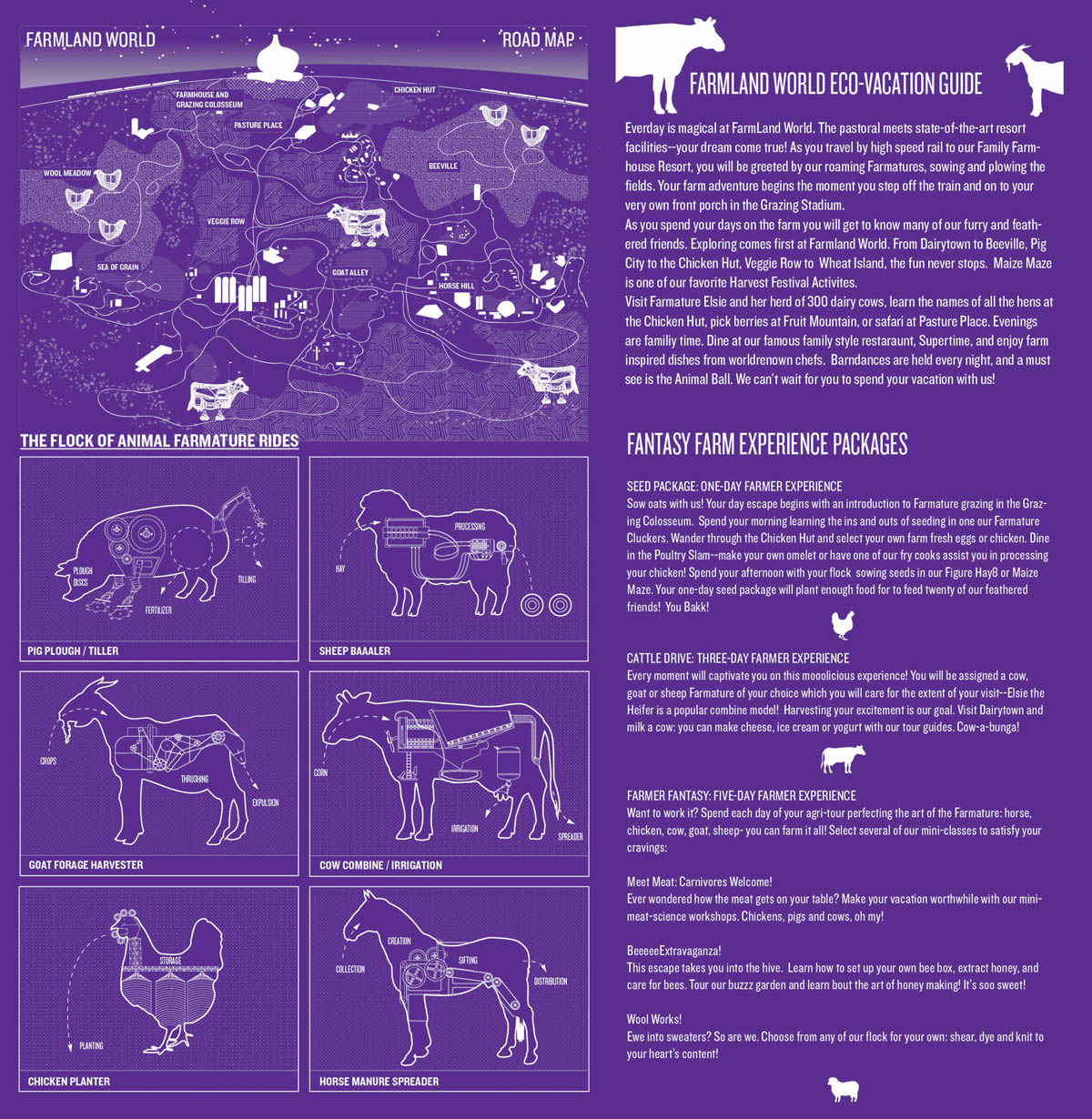 [Image: From “Farmland World” by Design With Company; view larger].
[Image: From “Farmland World” by Design With Company; view larger].
On the project plan, you’ll also see such places as “Beeville” and “Veggie Row,” the latter promising an internally-animated range of machine-plants sprouting from beds of artificial soil.
Having gone to elementary school in a small town in rural Wisconsin, I vividly remember being taken to see farm animals over at UW-Madison, including one that had had a window surgically implanted into its side; you could actually watch the cow, in section, digesting its food.
To go from this—a bovine proto-cyborg—to Design With Company’s beautifully rendered “Farmland World” doesn’t actually seem like such a stretch.
In any case, congratulations to Allison Newmeyer and Stewart Hicks for placing as second runner-up in the Animal Architecture Awards; for more, see the Animal Architecture website as well as this earlier post today on BLDGBLOG.

Adam Curtis featured the same cow windows in part 2 of his documentary on the control of ecosystems- George Van Dyne and others.
All Watched Over By Machines of Loving Grace – 2 – The Use and Abuse of Vegetational Concepts
cow bit at 47m
The picture at the top of this article really reminded me of this, from Sid Meier's Alpha Centauri:
http://kellymangum.com/resume/smac/Factions/images/peacebase2.jpg
Hmm… It's like 'Pink Floyd meets Hello Kitty'.